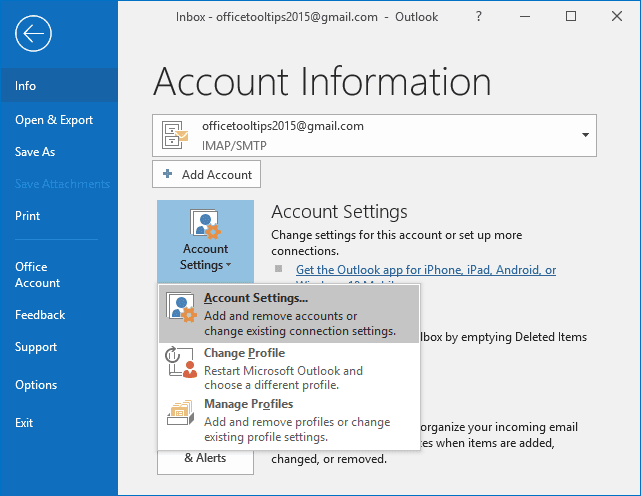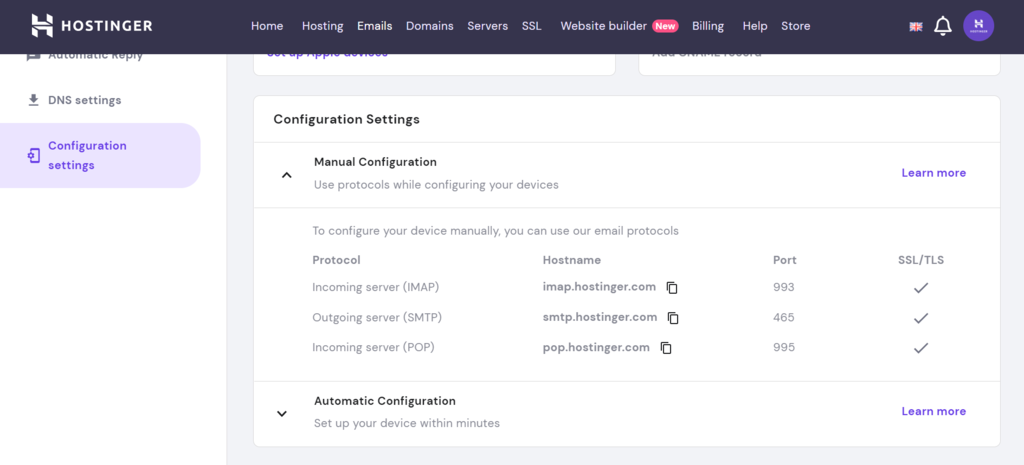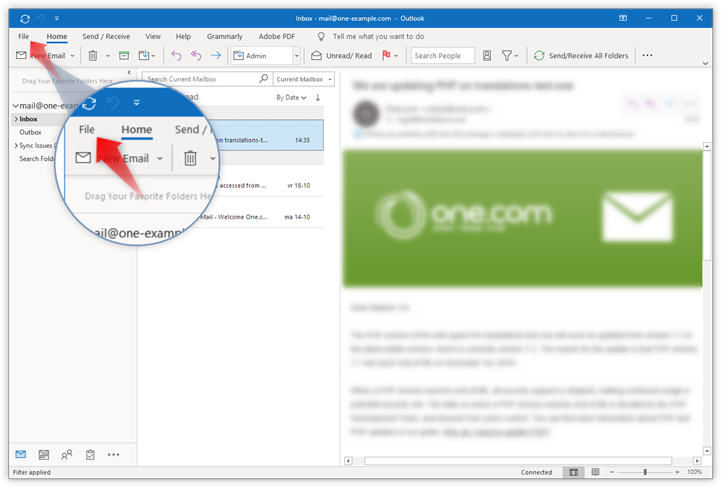
- MICROSOFT OUTLOOK 2016 EMAIL SETUP GOING INTI 2 DATA FILES PC
- MICROSOFT OUTLOOK 2016 EMAIL SETUP GOING INTI 2 DATA FILES WINDOWS
Under Options, choose how you want to deal with emails and contacts, then choose Next. Select Outlook Data File (.pst) and click Next.īrowse to the. Select Import from another program or file, and then click Next. See What version of Outlook do I have? to find your version of Outlook and to get to right import steps. If your ribbon doesn't have a File option in the top left corner, you aren't using an Outlook app installed on your computer. These instructions assume you've already exported your Outlook email, contacts, and calendar from another instance of Outlook, and now you want to import them to Outlook.Īt the top of your Outlook ribbon, select File. You want to move Outlook items between local folders and an IMAP or Exchange server.
MICROSOFT OUTLOOK 2016 EMAIL SETUP GOING INTI 2 DATA FILES PC
You want to move Outlook items from PC to Mac or Mac to PC You want to move Outlook items from one PC to another PC

You want to move Outlook items from one email account to another email account #1 - Which data file should you remove (if any)? Depends on the answers to the above.There are several reasons why you might want to import Outlook items from an Outlook Data File (.pst). So to get back to point regarding your questions Those can be dealt with at any time once you have things the way you want.
MICROSOFT OUTLOOK 2016 EMAIL SETUP GOING INTI 2 DATA FILES WINDOWS
Any other PST files that appear that are not associated with an email account would have to been manually added.Īs for any data file that has a number in it like (1) as you described, just means that the same email account was configured more then once and Outlook found a file already existing in the Windows folder and added the # to distinguish it - other then that the number doesn't mean anything.įor now, I would not remotely be concerned with any other Outlook data files that may exist on your hard drive that are not currently in the Outlook profile. The other reason you might have a PST file not associated with an email account is if it's being used as an data file. To make things easier when you're looking at the Outlook Nav Pane, press CTRL+6 to switch the Nav Pane to so you can see all folders for each file listed in the Nav Pane. If the purpose of this PST file is to just maintain your contact/calendar folders, the other folders will typically be empty and cannot be deleted. This data file will appear in the Outlook Nav Pane with a complete set of standard folders (i.e. The button only applies to POP3 accounts.Ī PST file need not be associated with a specific email account which is a common practice to maintain the default contact/calendar folders. To determine which PST files a POP3 account uses, when you're in the Account Settings -> Email tab, highlight each POP account and check the folder path/file name shown besides the button at the bottom of that window. POP3 accounts can each have their own PST file OR all POP3 accounts can use a single PST file (or any combination of that) More specificallyĮach IMAP and Exchange account has one.


Just going by your description, you have at least 1 IMAP or Exchange account.Įvery email account has a data file associated with it. You can check this by going toįile -> Account Settings -> Email tab (account type is in the right hand column). Something I should have asked in my last response was how many email accounts do you have configured and just for the sake of confirmation, what type (POP3, IMAP or Exchange). As is the case for Outlook desktop, the standard default Outlook folders cannot be deleted. If you have multiple folder lists, then that would be due to having "Connected Accounts" configured where the connected account is configured to have its own folders. #2 - Do you need both of these data files? For instance, is one being used for your email folders and the other being set as the "default data file" where the default contact/calendar folders are stored. Go to File -> Account Settings -> Data FIles tab

ost) files are configured in the Outlook profile The folders you are asking about are standard default Outlook folders which cannot be deleted. If referring to Outlook desktop, if you have 2 folder trees in the Outlook Nav Pane, it means that you have two data files configured in the Outlook profile which can legitimately occur for a variety of reasons. You posted in the Outlook on the web forum but it's not clear whether you're referring to the Outlook desktop program (part of the Office suite) or to the folder lists for Outlook on the web


 0 kommentar(er)
0 kommentar(er)
